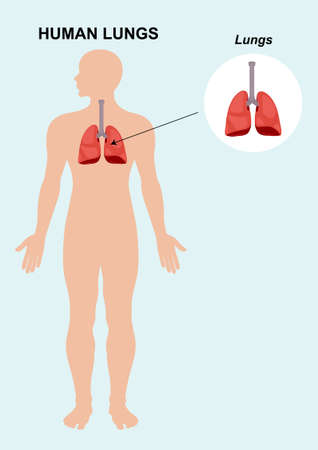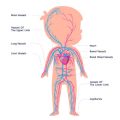Understanding Pediatric Orthopedic Disorders
When we talk about pediatric orthopedic disorders, were referring to conditions that affect the bones, joints, or muscles in children. Early intervention is crucial because childrens bodies are still growing and developing, making it easier to correct certain issues before they become more serious. In the United States, there are several common orthopedic conditions that impact kids. Understanding these can help parents, caregivers, and healthcare professionals spot early signs and seek timely care.
Common Pediatric Orthopedic Conditions in the U.S.
| Condition | Description | Typical Signs | Who Is Affected? |
|---|---|---|---|
| Developmental Dysplasia of the Hip (DDH) | A problem where the hip joint doesn’t form properly, leading to instability or dislocation. | Uneven leg lengths, limited hip movement, folds in thigh skin that don’t match. | Newborns and infants (more common in girls). |
| Clubfoot (Talipes Equinovarus) | A birth defect where a baby’s foot is twisted out of shape or position. | The foot points downward and inward, making walking difficult if untreated. | Newborns (can affect one or both feet). |
| Scoliosis | A sideways curvature of the spine that often appears during growth spurts. | Uneven shoulders or waist, leaning to one side, visible curve in the back. | Children and teens (especially girls during puberty). |
| Limb Deficiencies | When an arm or leg doesn’t form completely during pregnancy. | Shortened limb(s), missing parts of arms/legs. | Detected at birth or by ultrasound during pregnancy. |
Why Early Intervention Matters
Pediatric bones are different from adult bones—they grow quickly and have a better ability to heal. This makes early diagnosis and treatment especially important. Addressing these conditions as soon as possible can help children reach their full physical potential, prevent long-term problems, and improve overall quality of life. Parents who notice any unusual signs should talk to their pediatrician or a pediatric orthopedic specialist right away. In the following sections, we’ll explore evidence-based strategies for early intervention tailored for each condition.
2. Importance of Early Intervention
Early intervention in pediatric orthopedic disorders means identifying and addressing problems with the bones, joints, or muscles in children as soon as possible. Taking action early can make a huge difference for a child’s future health, mobility, and daily life. Orthopedic issues like clubfoot, hip dysplasia, scoliosis, and flat feet are much easier to treat when caught early. If these conditions go untreated, children may face pain, limited movement, or even lifelong disability.
How Early Intervention Impacts Children
When orthopedic problems are managed early, children have a better chance of developing normal movement patterns. This allows them to play sports, keep up with their peers, and participate fully in school and family activities. Early treatment can also reduce the need for more complex surgeries later on. In many cases, less invasive treatments like physical therapy, bracing, or casting work best when started early.
Benefits of Early Identification and Management
| Area | Potential Benefits of Early Intervention |
|---|---|
| Function | Improved muscle strength and joint flexibility; fewer limitations in daily activities |
| Mobility | Better walking ability; reduced risk of needing assistive devices later in life |
| Quality of Life | Increased participation in school and community; higher self-esteem; less pain |
| Treatment Outcomes | More effective use of non-surgical options; less need for major surgery; faster recovery times |
The Role of Families and Healthcare Providers
Parents and caregivers play a key role in spotting early signs of orthopedic issues. Regular check-ups with pediatricians or family doctors help catch problems before they get worse. In the U.S., school nurses and teachers may also notice if a child is having trouble moving or keeping up with classmates. Working together as a team helps ensure that children get the support they need right away.
Early intervention isn’t just about medical treatment—it’s about helping kids reach their full potential at home, at school, and in their communities.

3. Evidence-based Intervention Strategies
Understanding Early Treatment Approaches
When it comes to pediatric orthopedic disorders, early intervention can make a world of difference. Research shows that addressing these conditions early leads to better outcomes for children as they grow and develop. Let’s take a look at some proven strategies used by doctors and therapists across the United States.
Casting and Bracing
Casting and bracing are often the first steps in treating many childhood orthopedic issues, such as clubfoot, scoliosis, or developmental dysplasia of the hip (DDH). These methods help guide bone and joint development without surgery. Here’s how they compare:
| Treatment | Common Uses | Benefits | Considerations |
|---|---|---|---|
| Casting | Clubfoot, fractures, DDH | Non-invasive, effective for early-stage conditions | Requires regular follow-up and cast changes |
| Bracing | Scoliosis, flat feet, post-casting support | Allows movement, customizable fit | Needs consistent wear for best results |
Physical Therapy (PT)
Physical therapy is a cornerstone of early intervention. Therapists use fun, child-friendly exercises and activities that help kids build strength, coordination, and flexibility. PT supports recovery from injuries or surgeries and helps prevent future problems. Families are encouraged to participate so exercises can be continued at home.
Common Goals of Pediatric Physical Therapy:
- Improve range of motion and flexibility
- Strengthen weak muscles
- Enhance balance and motor skills
- Promote independence in daily activities
Surgical Options When Needed
Surgery is considered only when other treatments don’t provide enough improvement or when a condition is more severe. Advances in minimally invasive techniques mean shorter hospital stays and faster recoveries for kids. Surgeons work closely with families to explain all options and expected outcomes.
Examples of Surgical Interventions:
- Tendon lengthening for cerebral palsy-related contractures
- Casting followed by minor procedures for resistant clubfoot cases (Ponseti method)
- Surgical correction for severe scoliosis or hip dislocations not improved by bracing or casting
The Importance of Teamwork and Family Involvement
Pediatric orthopedic care is most successful when it involves a team—doctors, therapists, nurses, and families working together. Open communication ensures that every child gets a personalized treatment plan tailored to their needs and lifestyle.
4. Multidisciplinary Collaboration and Family Engagement
The Importance of Teamwork in Pediatric Orthopedic Care
Early intervention for pediatric orthopedic disorders is most effective when there is strong collaboration among healthcare professionals, schools, and families. By working together, these teams can create a supportive environment that helps children achieve their best possible outcomes.
Key Players in Coordinated Care
| Team Member | Role in Pediatric Orthopedic Care |
|---|---|
| Pediatricians | Identify early signs of orthopedic disorders and coordinate referrals. |
| Orthopedic Specialists | Diagnose conditions, recommend treatments, and monitor progress. |
| Physical and Occupational Therapists | Provide therapy to improve movement, strength, and daily function. |
| School Staff (Teachers, Counselors) | Support accommodations in the classroom and help monitor academic participation. |
| Families | Advocate for their child, reinforce home exercises, and provide emotional support. |
Communication: The Key to Success
Regular communication among all team members ensures everyone stays informed about the childs needs and progress. This might include scheduled meetings, shared care plans, or digital updates through secure portals. When families feel heard and included, they are more likely to follow through with recommendations at home.
The Role of Schools in Early Intervention
Schools play a vital part in identifying challenges that may not be obvious during medical visits. Teachers may notice if a child is struggling with walking, participating in gym class, or carrying their backpack. Prompt communication with parents and healthcare providers can lead to earlier interventions.
Tips for Effective Family Engagement
- Encourage families to ask questions during appointments.
- Share written instructions or videos for home exercises.
- Acknowledge the unique strengths and needs of each family.
- Create a welcoming environment for family input during meetings.
This team-based approach ensures that every child receives personalized care—at home, at school, and in the clinic—helping them reach their full potential despite orthopedic challenges.
5. Community Resources and Support Systems
Accessing Early Intervention Programs
In the United States, families of children with orthopedic conditions can benefit from early intervention programs. These programs provide therapy, education, and family support services for children from birth to age three who have developmental delays or disabilities. Services are often offered through state-run agencies, and eligibility is determined by an evaluation process. To get started, parents can contact their state’s Early Intervention office or speak with their child’s pediatrician for a referral.
Table: Common Community Resources
| Resource Type | Description | How to Access |
|---|---|---|
| Early Intervention Programs (EI) | Therapy and support for infants and toddlers with orthopedic needs | State health department or local EI agency |
| Support Groups | Peer connections and emotional support for families | Hospitals, online communities, nonprofit organizations |
| Adaptive Sports Leagues | Recreational activities adapted for children with mobility challenges | Parks & recreation departments, YMCA, specialized nonprofits |
| Financial Assistance | Help covering medical costs and equipment needs | Insurance programs, Medicaid, charitable foundations |
Support Groups for Families and Children
Support groups offer a valuable network where parents can share experiences, resources, and encouragement. Many hospitals and clinics host in-person or virtual meetings, while national organizations like the Shriners Hospitals for Children and the Muscular Dystrophy Association offer online forums. These groups help families feel less isolated and more empowered to advocate for their child’s needs.
Adaptive Sports and Recreation Opportunities
Participation in adaptive sports is a great way for children with orthopedic disorders to build confidence, develop physical skills, and make friends. Programs such as Special Olympics, local wheelchair basketball teams, or Miracle League baseball provide safe environments tailored to individual abilities. Parents can ask therapists or community centers about available activities in their area.
Navigating Financial Assistance Options
The cost of treatment, therapy, and adaptive equipment can be overwhelming for families. In the U.S., financial assistance may come from public sources like Medicaid or private organizations such as UnitedHealthcare Children’s Foundation or Easterseals. Social workers at hospitals can guide families through applications for grants, insurance appeals, or government benefits like Supplemental Security Income (SSI).
Quick Tips for Finding Local Support:
- Contact your child’s doctor or therapist: They often know about local resources.
- Visit your state government website: Search for “early intervention” or “children’s services.”
- Network with other parents: Word-of-mouth recommendations can lead to helpful programs.
- Check with national nonprofits: Many have directories of local chapters and resources.
The right community support can make a big difference in your child’s progress and your family’s well-being. Don’t hesitate to reach out—many families have walked this path before and are ready to help guide you.


